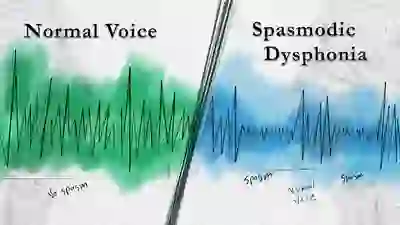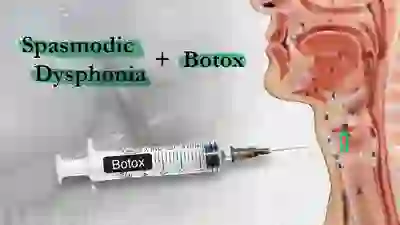Post-Treatment for AD-SD: What to Expect?
(the “strained-strangled” SD variant)
Robert W. Bastian, M.D. — Published September 10, 2023
Introduction
You have just undergone an injection with botulinum toxin (Botox) for the “strained-strangled” voice caused by your adductory spasmodic dysphonia. For a few days you may notice slight soreness in the area of your larynx, and perhaps a small bruise on the front of your neck. For the next three to four months (the average time before you will need another injection, once we find your “best dose”), you will go through the stages summarized below.-
The Initial Wait
For a day or two your voice will usually be unchanged. Approximately 24 to 72 hours later you should find that the spasms are diminishing and that your voice is steadier. At the same time you may start to experience some weakness or breathiness of voice. (Some call this “laryngitis.”) In other words, depending on dose and your sensitivity to the medicine, you may go from a tight, strained “SD” voice to one that sounds still like a milder case of SD, then onward to noticeable weakness of voice as the expected and desired early side effect of Botox. -
The “My Voice Is Better But Weak!” Phase
This phase may last from a few days up to many weeks, depending (again) on dose and your sensitivity to the Botox. During this phase, you should experience a better voice—certainly more stable and predictable—though you may have a hard time being heard in very noisy environments. Special note: At the first injection, it is impossible to know an individual’s sensitivity to Botox. Therefore, after the first injection in exceedingly sensitive individuals, it is possible that the voice will become so weak as to be little more than a whisper, or to become somewhat high-pitched and “Minnie Mouse” in quality. This can be avoided in the future, by using a lower dose. -
The “Spasms Are Increasing” Phase
Typically, during the second to fourth month after your injection you may find that your voice is again worsening. When you notice this happening, you may not need another injection immediately, because you may still have many weeks of reasonable though not perfect vocal function. As spasms become more noticeable, you should consult your calendar and arrange another injection appointment.
After first injections
Approximately one week later, leave a voice sample on your physician’s personal voicemail line so that they can hear the full extent of the effect of Botox on your voice. The message should be left at the end of the day, not in the morning (when voice can sound stronger).Bruising, bleeding
Occasionally, in the first hour or so after injection, a person may cough up blood. By 20 minutes or so after the injection, this is typically reduced to pink tinges, but may last longer if you are on aspirin, coumadin, plavix, and so forth. Pressure on the point of injection greatly reduces the very small chance of bruising on the front of the neck.Coughing on liquids and weak cough
In the first few days or weeks after an injection, some individuals experience a tendency to cough when drinking thin liquids like water. If it does occur, use one or more of the following strategies:- Hold liquid in mouth and tuck chin towards chest before swallowing hard.
- Use a drinking straw.
- Use carbonated beverages.
- Use thicker liquids such as apricot nectar, even jello.
Variability of results between injections
No two injections will yield exactly the same results, even if the technique of injection and dose are kept the same. This may relate, among other things, to small, unavoidable differences in placement of the medication within the small vocal fold muscles.Difference between yours and other persons’ results
Some wonder why another person with SD achieves a longer benefit or has less initial vocal weakness. This is because each individual’s response is determined not only by dosage and placement, but also by differences in sensitivity to the medication and how quickly the Botox effect is neutralized by the body. Some fortunate persons seem “slow” to neutralize the Botox and therefore benefit from Botox therapy for 20 weeks or longer. A few “chew up the Botox” unusually quickly, and run out of benefit in only 10 weeks. The average duration of benefit is about 16 weeks (4 months).The unsatisfying response to a series of injections
Occasionally, an individual wonders, after having a number of Botox injections, if they are worth the bother. Furthermore, perhaps initial vocal weakness was frustrating and even interfered with ability to work (especially with first injections). Maybe the duration of benefit was disappointingly short. Should any of these be your experiences, keep in mind that alterations of technique, dosage, timing of injections, and so forth, may help achieve a better response in the future.Share this article

Adductory Spasmodic Dysphonia – Tonic Variant
Adductory spasmodic dysphonia (AD-SD) is a variant of spasmodic dysphonia in which the spasms push the vocal cords together, choking off or straining the voice.
There are two variants of AD-SD: classic and tonic. In the classic variant, the adductory spasms of AD-SD are intermittent, each time clamping the vocal cords together momentarily, so that words or syllables in a person’s speech are intermittently choked out.
In the tonic variant, the adductory spasms are more constant and sustained than intermittent, so that instead of interrupting the person’s speech, the spasms cause a constant strained or “tight” vocal quality.

Spasmodic Dysphonia
In this video, Dr. Robert Bastian reviews the various types and subtypes of a rare neurological voice disorder called spasmodic dysphonia (SD). Numerous voice examples are included, along with video of the vocal cords.
When Botox Disappoints
In this video, Dr. Bastian discusses common problems with Botox treatment for spasmodic dysphonia (SD). He delivers clear, practical advice that can be used to increase the effectiveness of Botox treatments for SD.

National Spasmodic Dysphonia Association
A nonprofit 501(c)3 organization dedicated to improving the lives of people affected by SD and related voice conditions through research, education, awareness and support.